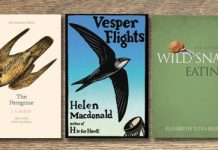In Timaeus, Plato wrote, “anything good is beautiful”. This philosophy was interpreted by his student Aristotle as a remark on goodness of character and the harmony it entailed. Running with Plato’s idea, Aristotle probably pictured the kind of people who wake up at six-thirty to blend a kale smoothie, do Pilates on the roof and accomplish twice as much as the average snoozer. Aristotle then summarised it simply: “if our acts are to be perfect, many purely external conditions must be fulfilled, and these will be all the more numerous in proportion as our acts are grander and fairer.”
If that sounds reasonable to you, it certainly also makes sense that this can be applied to something as small but pleasing as the cultivation of your own habitat. When you’re happy with your surroundings, things seem to run more smoothly. The outside affects the inside, and to explore the extent of this relationship between a person and their external life, where better to start than in the home of an artist? Designers, stylists, writers, all of that. If goodness is beauty and we strive to be surrounded by good, then in the fortress of a creator we have the perfect case study.
Julia Rapson de Pauley grew up in London and worked for the Station House Opera where she designed costumes of the French Revolution. Today, she lives with her family in Bridport. Moved on from costume, Julia now designs artisanal necklaces and leather belts with eye-catching buckles which are all available in Lyme Regis’ shop, Ryder & Hinks. Seeing the gallery-like interior of her lovely Georgian house, confirms that the precision of her designs is not by chance, but maybe even a product of her environment.
In the name of discovery, I was invited in. All walls inside are white, only one stands out as it’s marked with little red flowers, messily drawn in crayon by one of Julia’s daughters years ago and now treated like a framed painting itself. The floor is either bare wood or stone, speckled with collected sculptures, and there are tiny ceramic figurines balanced at unpredictable intervals on the dado rails of each room. When I ask about the figures as she leads me around the house, Julia laughs that ‘proportion and elegance’ are things she seeks to surround herself with. This is quite evident in her impressive collection of curios.
As my eyes sweep the rooms, I spot a variety of peculiar objects such as an antique container shaped like a walnut and filled with seeds, an array of colourful stone eggs huddled together next to a sculpture of a horse’s leg, and a collection of pottery figures stylishly decorated by actual bracelets—also made by Julia. As I prepare to ask the creator whether she sees a connection between what she collects and what she makes, bizarrely I end up answering it myself. The house is full of eclectic and timeless beauty.
We talk about the necklaces. For Julia, the glass beads—handcrafted in India—represent fluidity on their silk strings. Her necklaces are ‘incredibly simple’ in her words, and I begin to understand that it must be quite brave to entrust one’s aesthetic to an accessory as beautifully understated as these. Describing her jewellery, Julia says: ‘I love the idea of human activity imbued in an object’, and that movement is crucial. Maybe that’s why she loves giving them as gifts—alongside her freshly baked cupcakes, she’s locally renowned for.
It seems that she wishes to be strong enough to allow life to flow and fluctuate, to come and go, and I ask her if this applies to her antique belongings. She says: ‘I should be able to give anything away’ with a grit to her tone, suggesting the zen mindset might still be a work in progress. The jewellery, like her bakery, is more perfectly Aristotelian and Platonic than one may think. The same ethos of thoughtfulness and perfection that she approaches work with fulfils the philosophy. Cultivate fine things to experience fine things.
The fact that items disappear makes them all the more special and worth keeping. This is exemplified as Julia explains how the same glass beads bedecking her wrist would in the past have been a currency. Claiming not to like fashion in the traditional sense, she cherishes the anachronistic collection of curiosities that make her house a treasure trove. It does indeed seem as if the designer prioritises simple constants of life such as ephemerality, unconfined beauty and wisdom, to name a few. When she mutters about interest in ‘human form and wearable emotion’ I think Plato would be proud. Markers of life and vitality are everywhere in this building—figurines of animals, horseshoes, even the dried pink flowers kept in a surprisingly cute makeshift vase of silver wellies… Everything points to movement, pleasure and health.
Something that strikes me as brilliant, as she brings out a glass-topped case full of her necklaces, is their similarity to the decoration of the house. Those white walls and colourful stone eggs mentioned earlier? The beads work the exact same way. These necklaces of the rainbow are powerful bursts of colour against a stark white background in the box.
Everything indoors, including Julia’s outfit, is monochrome with a splash of brightness. I can see that these necklaces are purchasable gifts, ways of decorating yourself in the thoughtful, confident technique that Julia has applied to the cultivation of her environment and herself. The care and precision she makes her necklaces and belts with puts goodness into beauty and beauty into goodness. Big up Plato.
At the end of our visit, she likens her home to the shell of a snail which I’d argue is very apt. I start thinking that this may apply more so to creative minds, and Julia is quick to remind me that we are all artists in our own rights. She has found a balance in her life, and her collections and inspirations are based on “contemplation rather than appetite and consumption”, as David Pugh puts it in The Dialect of Love.
The care that this creator takes in choosing her belongings seeps into her work; she’s not just hoarding or indulging in what’s funky at the moment—she really loves what she keeps and what she creates. There’s a lot our external worlds can mean for us, and hopefully, we can all work towards those grand acts of personal goodness that Aristotle wrote about.









